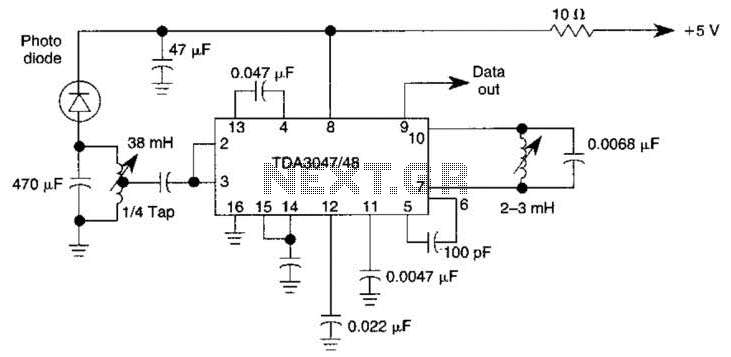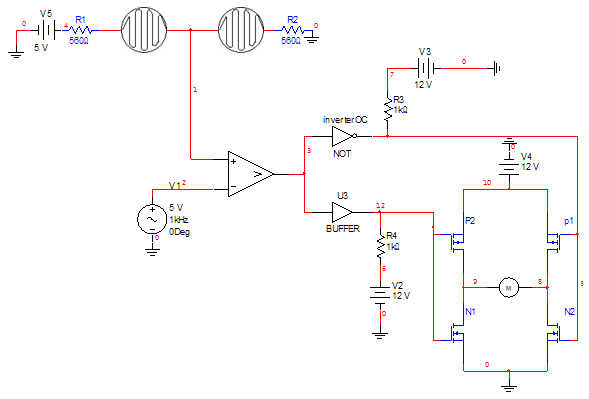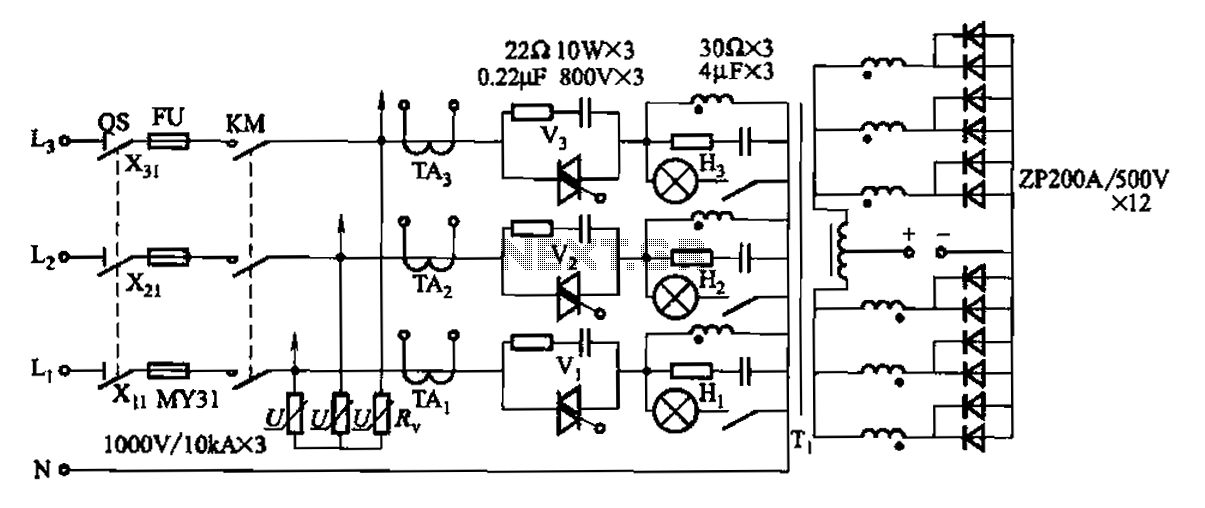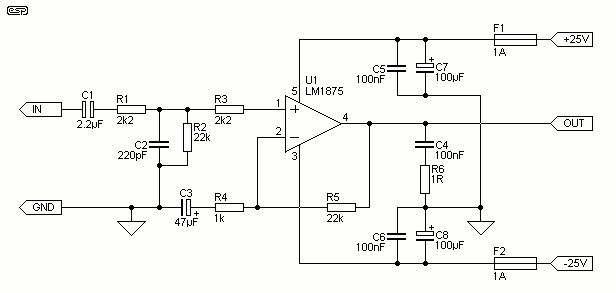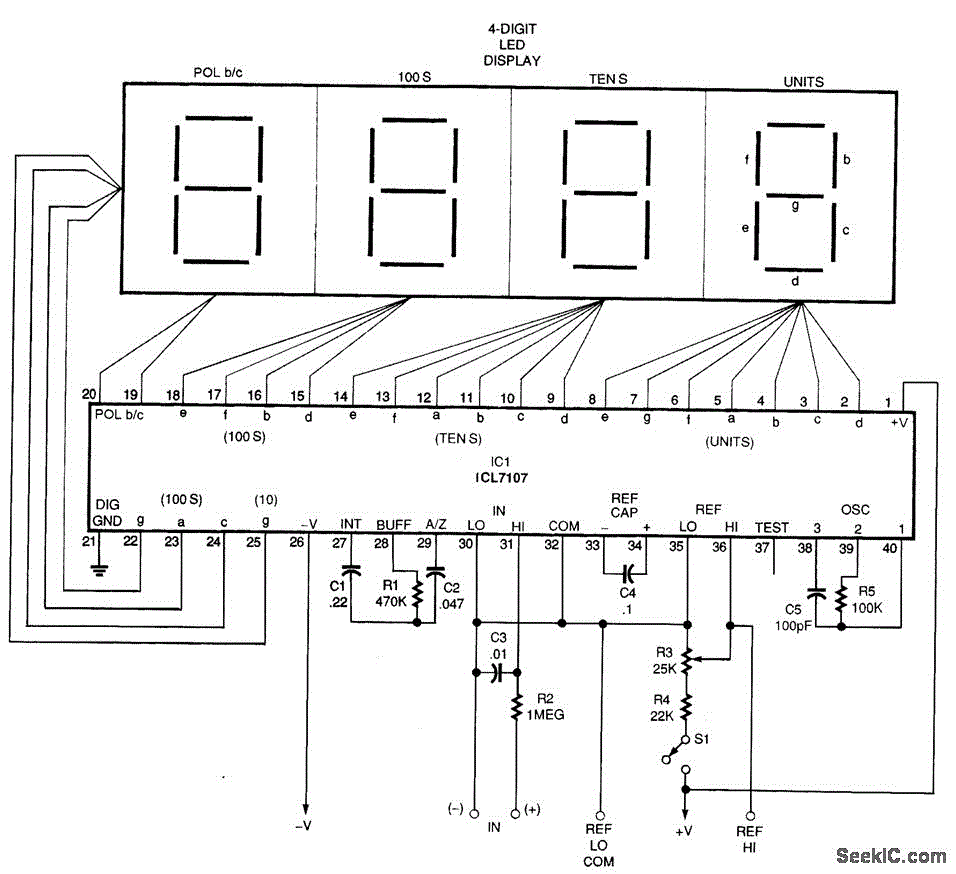
TDA2005 car audio amplifier circuit diagram project
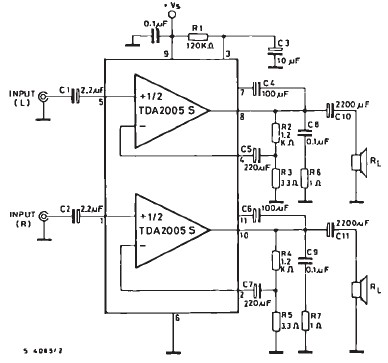
The TDA2005 car audio amplifier circuit is specifically designed for use in devices such as car radios and CD players. This amplifier circuit utilizes the TDA2005 audio integrated circuit (IC), which can deliver a maximum output power of 20 watts into a 4-ohm load when configured in bridge mode. The TDA2005 IC is a Class B audio amplifier housed in a Multiwatt 11 package, available in two variants: TDA2005M for bridge mode applications and TDA2005S for stereo applications. In stereo mode, the TDA2005 can provide an output power of 10 + 10 watts into a 2-ohm load. One of the key benefits of using the TDA2005 in bridge mode is the reduced total harmonic distortion (THD), which is 1%, compared to a 10% THD in stereo mode. This audio amplifier IC supports a broad input voltage range from 8 volts to 18 volts and features several advantages, including short circuit protection, thermal overload protection, minimal external components required, and the flexibility to operate as bridge or stereo booster amplifiers with or without bootstrap. Additionally, it allows for programmable gain and bandwidth and has no electrical isolation between the package and the heatsink.
The TDA2005 audio amplifier circuit is an efficient solution for automotive audio applications, offering a robust design that caters to various configurations. The bridge mode operation allows for higher output power, making it suitable for driving larger speakers or subwoofers in a vehicle, while maintaining low distortion levels that enhance audio clarity. The Class B design ensures that the amplifier operates efficiently, minimizing power loss and heat generation.
The Multiwatt 11 package of the TDA2005 facilitates easy integration into existing audio systems, providing a compact footprint that is ideal for space-constrained environments typical in automotive applications. The choice between the TDA2005M and TDA2005S variants allows designers to optimize the circuit for their specific needs, whether prioritizing maximum power output in bridge mode or stereo sound quality.
In terms of protection features, the short circuit protection prevents damage to the amplifier in the event of speaker faults, while the thermal overload protection safeguards against excessive heat buildup, ensuring reliability and longevity of the amplifier in demanding automotive conditions. The ability to operate within a wide input voltage range enhances the versatility of the TDA2005, allowing it to function effectively in various vehicle electrical systems.
Overall, the TDA2005 car audio amplifier circuit is a well-engineered solution that combines power, efficiency, and protection features, making it an excellent choice for enhancing the audio experience in automotive environments.This TDA2005 car audio amplifier circuit is specially designed to work on devices like : car radios, cd-players and similar devices. This car radio audio amplifier circuit is based on the TDA2005 audio IC which can provide a maximum output power of 20 watts into a 4 ohms load, connected in bridge mode configuration.
The TDA2005 audio IC is a c lass B audio amplifier designed in a Multiwatt 11 package and can be ordered in two types TDA2005M used for bridge mode application or TDA2005S used in stereo applications. If the TDA2005 is used in stereo mode it can deliver a 10 + 10 watts output power in a 2 ohms load. The advantage of using the TDA2005 audio amplifier in bridge mode configuration is that the total harmonic distortion ( THD) is 1% and the THD for the stereo configuration mode is 10 %.
This audio amplifier IC supports a wide range of input voltage from 8 volts up to 18 volts and it has many features like : short circuit protection, overrating chip temperature, low external components required, bridge or stereo booster amplifiers with or without boostrapand with programmable gain and bandwidth, no electrical isolation between the package and the heatsink. 🔗 External reference
The TDA2005 audio amplifier circuit is an efficient solution for automotive audio applications, offering a robust design that caters to various configurations. The bridge mode operation allows for higher output power, making it suitable for driving larger speakers or subwoofers in a vehicle, while maintaining low distortion levels that enhance audio clarity. The Class B design ensures that the amplifier operates efficiently, minimizing power loss and heat generation.
The Multiwatt 11 package of the TDA2005 facilitates easy integration into existing audio systems, providing a compact footprint that is ideal for space-constrained environments typical in automotive applications. The choice between the TDA2005M and TDA2005S variants allows designers to optimize the circuit for their specific needs, whether prioritizing maximum power output in bridge mode or stereo sound quality.
In terms of protection features, the short circuit protection prevents damage to the amplifier in the event of speaker faults, while the thermal overload protection safeguards against excessive heat buildup, ensuring reliability and longevity of the amplifier in demanding automotive conditions. The ability to operate within a wide input voltage range enhances the versatility of the TDA2005, allowing it to function effectively in various vehicle electrical systems.
Overall, the TDA2005 car audio amplifier circuit is a well-engineered solution that combines power, efficiency, and protection features, making it an excellent choice for enhancing the audio experience in automotive environments.This TDA2005 car audio amplifier circuit is specially designed to work on devices like : car radios, cd-players and similar devices. This car radio audio amplifier circuit is based on the TDA2005 audio IC which can provide a maximum output power of 20 watts into a 4 ohms load, connected in bridge mode configuration.
The TDA2005 audio IC is a c lass B audio amplifier designed in a Multiwatt 11 package and can be ordered in two types TDA2005M used for bridge mode application or TDA2005S used in stereo applications. If the TDA2005 is used in stereo mode it can deliver a 10 + 10 watts output power in a 2 ohms load. The advantage of using the TDA2005 audio amplifier in bridge mode configuration is that the total harmonic distortion ( THD) is 1% and the THD for the stereo configuration mode is 10 %.
This audio amplifier IC supports a wide range of input voltage from 8 volts up to 18 volts and it has many features like : short circuit protection, overrating chip temperature, low external components required, bridge or stereo booster amplifiers with or without boostrapand with programmable gain and bandwidth, no electrical isolation between the package and the heatsink. 🔗 External reference
